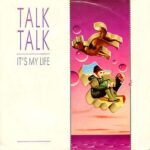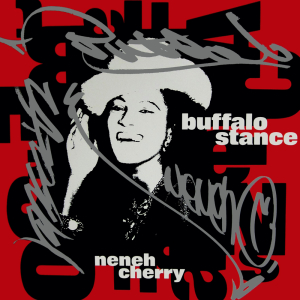 “It’s My Life” by Talk Talk is one of those rare tracks that manages to feel both deeply personal and universally relatable, an anthem of independence that has endured across generations. Released in 1984, during an era when synth-driven pop was dominating the charts, the song managed to distinguish itself not only through its distinctive sound but also through its poignant lyrics and haunting vocal delivery from frontman Mark Hollis. While many new wave songs of the early ’80s leaned heavily on flashy production and upbeat themes, Talk Talk took a different path with “It’s My Life,” crafting a moody, atmospheric piece that spoke to the complexity of human emotion, the struggle for autonomy, and the power of personal truth. Over the years, the track has become Talk Talk’s defining statement, covered and reimagined by multiple artists, yet never losing the intimate and soulful quality that made it so special in the first place.
“It’s My Life” by Talk Talk is one of those rare tracks that manages to feel both deeply personal and universally relatable, an anthem of independence that has endured across generations. Released in 1984, during an era when synth-driven pop was dominating the charts, the song managed to distinguish itself not only through its distinctive sound but also through its poignant lyrics and haunting vocal delivery from frontman Mark Hollis. While many new wave songs of the early ’80s leaned heavily on flashy production and upbeat themes, Talk Talk took a different path with “It’s My Life,” crafting a moody, atmospheric piece that spoke to the complexity of human emotion, the struggle for autonomy, and the power of personal truth. Over the years, the track has become Talk Talk’s defining statement, covered and reimagined by multiple artists, yet never losing the intimate and soulful quality that made it so special in the first place.
At its core, “It’s My Life” is a declaration of self. Mark Hollis delivers the lyrics with a restrained intensity, as though every word carries a burden of honesty. The refrain of the song, “It’s my life, don’t you forget,” functions as both a warning and a mantra, a bold reminder of individuality in a world that often pressures people to conform. Unlike the typical love songs of its era, “It’s My Life” captures something less tangible and more enduring—the need to assert oneself against expectations, to live authentically even when others may not understand or approve. This sentiment has allowed the track to resonate with listeners across decades, speaking to teenagers discovering their voice, adults reclaiming their independence, and anyone who has ever needed to assert their right to choose their own path.
Musically, the song exemplifies the early aesthetic of Talk Talk while also hinting at the bold experimentation that would later define their career. Built on a foundation of lush synthesizers, rhythmic basslines, and understated percussion, “It’s My Life” blends the energy of new wave with a touch of melancholy that sets it apart from its contemporaries. Unlike many of the glossy pop productions of the mid-1980s, the song is atmospheric rather than exuberant, haunting rather than celebratory. Producer Tim Friese-Greene, who would go on to become a key collaborator for the band, played an important role in shaping this sonic identity. The result is a track that feels simultaneously grounded in its time and timeless in its appeal.
The music video for “It’s My Life” also added to its mystique, with its memorable use of wildlife footage that contrasted with the human themes of the song. At the time, music videos were becoming central to an artist’s success thanks to the rise of MTV, and Talk Talk’s choice to use such a unique visual approach helped cement the track’s status as something different. Mark Hollis, known for his reluctance to embrace the trappings of fame and celebrity, further reinforced the authenticity of the band’s message—this was not a group chasing trends, but one creating something deeply personal and resonant.
Commercially, the song achieved moderate success upon its release, charting in multiple countries, particularly in Europe. In the UK, it reached the Top 50, and in the US, it became Talk Talk’s first entry on the Billboard Hot 100. However, like many songs that have grown in stature over time, “It’s My Life” would ultimately prove to have a far greater cultural impact than its initial chart position suggested. When re-released in 1990, the song climbed higher in the charts, introducing it to a new generation of listeners. Its true legacy, though, lies not in numbers but in influence and endurance.
One of the most fascinating aspects of “It’s My Life” is how it has continued to evolve in meaning as different artists have interpreted it. In 2003, No Doubt famously covered the song, bringing it back into the mainstream and exposing it to an entirely new audience. Gwen Stefani’s performance of the track injected a different kind of urgency into the lyrics, making it both a tribute to the original and a declaration of independence in her own voice. The cover was a commercial success, charting worldwide and becoming one of No Doubt’s signature songs. While purists argue that nothing can match the haunting subtlety of Talk Talk’s version, the fact that the song could be reimagined so successfully decades later is a testament to its timeless core.
For Talk Talk themselves, “It’s My Life” represents an important moment in their career trajectory. While the band initially emerged in the early ’80s as part of the synth-pop movement, Mark Hollis had ambitions far beyond the limitations of that genre. By the late 1980s, Talk Talk had completely reinvented themselves, pioneering what would come to be known as post-rock with albums like Spirit of Eden (1988) and Laughing Stock (1991). These records abandoned pop structures in favor of sprawling, experimental compositions that defied categorization. Yet despite this radical artistic shift, “It’s My Life” has remained a cornerstone of their legacy, bridging the gap between their early commercial sound and their later avant-garde achievements.
The enduring popularity of the song also speaks to Mark Hollis’s talent as a songwriter. Hollis, who was notoriously private and eventually retired from music altogether, believed in the purity of artistic expression over commercial gain. His voice in “It’s My Life” carries a fragile strength, a sense of vulnerability intertwined with determination. When he sings the iconic chorus, it doesn’t feel like a boast—it feels like a plea, a demand to be seen and respected for who he truly is. That emotional authenticity is rare in pop music, and it’s a major reason why the track continues to resonate so deeply.
Beyond its artistic qualities, “It’s My Life” has also become a cultural touchstone. The phrase itself has entered the lexicon as a statement of self-empowerment, used in contexts far beyond music. It has been quoted in films, commercials, and even everyday conversations, its simplicity and directness making it universally applicable. For many fans, the song has become an anthem of resilience, a reminder to live authentically regardless of societal pressures. That ability to inspire and empower is what elevates “It’s My Life” from a memorable pop hit to a true classic.
Looking back on its impact, it’s remarkable how a single song can encapsulate so much of an artist’s ethos while also transcending their career. Talk Talk may not have been the most commercially successful band of their era, but their influence on modern music is undeniable. Artists across genres, from Radiohead to Elbow to Sigur Rós, have cited their work as an inspiration. And at the center of that legacy lies “It’s My Life,” the song that introduced the world to the voice and vision of Mark Hollis.
The beauty of “It’s My Life” lies in its balance of strength and fragility, its ability to be both a bold declaration and a vulnerable confession. It doesn’t shout its message; it whispers it with conviction, inviting the listener to reflect on their own life and choices. That subtle power is what has allowed it to endure, long after many of its contemporaries have faded into nostalgia. Even today, when it plays on the radio or through a streaming service, it has the power to stop listeners in their tracks, to make them consider the weight of those words: “It’s my life, don’t you forget.”
As time has passed, the song has also taken on new layers of poignancy. With Mark Hollis’s passing in 2019, “It’s My Life” now feels like part of his legacy to the world, a reminder of his uncompromising dedication to authenticity in art and in life. While he may have stepped away from the spotlight, the music he created continues to speak for him, ensuring that his voice is never truly forgotten.
Ultimately, “It’s My Life” by Talk Talk is more than just a song—it’s a statement, a reflection of individuality, and a piece of art that has transcended its era. Its lush instrumentation, haunting vocals, and powerful lyrics combine to create something that feels both personal and universal, intimate and grand. Whether heard in its original form, through No Doubt’s reinvention, or in the countless moments it has been woven into popular culture, the song continues to resonate because it speaks to a truth we all recognize: our lives are our own, and it is up to us to live them fully and authentically.
From the neon glow of the 1980s to the experimental depths of Talk Talk’s later career, from MTV airplay to modern playlists, “It’s My Life” has remained a constant, an anthem of independence that refuses to fade. It is a song that belongs to its time yet transcends it, rooted in the sound of the ’80s but eternal in its message. When listeners hear it today, they are reminded not only of the brilliance of Talk Talk but also of the universal need to assert one’s identity in the face of life’s many pressures. That is why, decades after its release, “It’s My Life” continues to echo—defiant, haunting, and unforgettable.


